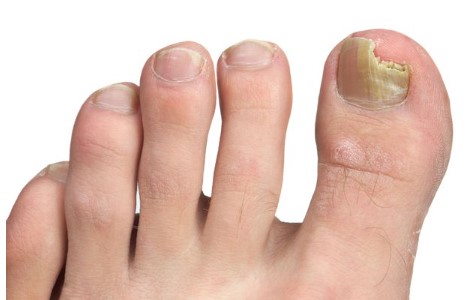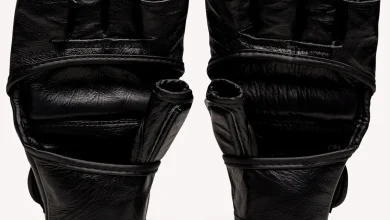Toe infections can be a painful and persistent issue that, if left untreated, can lead to serious complications. Whether it’s a minor irritation or a more severe infection, knowing how to heal a toe infection is crucial for maintaining foot health. In this guide, we will explore various methods and treatments to effectively manage and heal toe infections. At the Foot and Ankle Center of Arizona, under the expertise of Dr. Kris A. DiNucci, a renowned Podiatric Foot and Ankle Surgeon, we prioritize your foot and ankle health and provide the knowledge you need to make informed decisions about your care.
Understanding the Causes of Toe Infections
Before diving into how to heal a toe infection, it’s important to understand what causes these infections. Common causes include:
- Ingrown Toenails: This occurs when the edge of the toenail grows into the skin, causing pain, redness, and sometimes infection.
- Fungal Infections: Fungi thrive in warm, moist environments, making your toes susceptible to infections like athlete’s foot or onychomycosis.
- Bacterial Infections: Cuts, scrapes, or any other injury to the toe can become infected with bacteria, leading to redness, swelling, and pus.
- Trauma or Injury: Stubbed toes, blisters, or any injury to the toe can create an entry point for bacteria or fungi.
Understanding these causes is the first step in learning how to heal a toe infection effectively.
Recognizing the Symptoms of a Toe Infection
To properly heal a toe infection, recognizing the symptoms early is crucial. Common symptoms include:
- Redness and Swelling: The infected area may appear red and swollen.
- Pain and Tenderness: The infected toe may be painful, especially when touched.
- Discharge or Pus: In more severe cases, the infection may cause discharge, indicating a bacterial infection.
- Foul Odor: A bad smell can be a sign of an infection, particularly if pus is present.
- Difficulty Walking: Pain and swelling can make it uncomfortable to walk or wear shoes.
If you notice any of these symptoms, it’s important to take immediate steps to heal the toe infection before it worsens.
How to Heal a Toe Infection at Home
Mild toe infections can often be treated at home with proper care. Here are some steps to help you heal a toe infection:
- Clean the Area: Gently wash the infected toe with warm water and soap. Make sure to dry it thoroughly to prevent moisture buildup.
- Soak in Warm Water: Soaking the infected toe in warm, soapy water for 15-20 minutes can help reduce pain and swelling. Add a small amount of Epsom salt for additional healing properties.
- Apply Antibacterial Ointment: After cleaning, apply an over-the-counter antibacterial ointment to the infected area. This can help prevent the infection from spreading.
- Bandage the Toe: Cover the infected toe with a sterile bandage to keep it clean and protected. Change the bandage daily or if it becomes wet or dirty.
These home remedies are effective in healing mild toe infections. However, if symptoms persist, you may need professional treatment.
When to See a Doctor for a Toe Infection
Knowing when to seek professional help is vital in the process of healing a toe infection. You should see a doctor if:
- Symptoms Worsen: If the pain, swelling, or redness increases despite home treatment, it’s time to consult a healthcare professional.
- Presence of Pus: If you notice pus or a foul smell, this could indicate a more serious bacterial infection that requires medical intervention.
- Fever: A fever might suggest that the infection has spread beyond the toe and needs immediate attention.
- Persistent Infection: If the infection does not improve after a few days of home care, it’s important to see a doctor for further evaluation.
At the Foot and Ankle Center of Arizona, Dr. Kris A. DiNucci specializes in treating foot and ankle infections and can provide the expert care needed to heal a toe infection.
Professional Treatments to Heal a Toe Infection
If home remedies do not work, professional medical treatments may be necessary to heal a toe infection. Some of these treatments include:
- Oral Antibiotics: For bacterial infections, your doctor may prescribe oral antibiotics to help clear the infection.
- Drainage of Abscess: If an abscess has formed, it may need to be drained by a healthcare professional.
- Surgical Intervention: In severe cases, minor surgery may be required to remove infected tissue or to correct an ingrown toenail.
- Antifungal Medication: For fungal infections, topical or oral antifungal medications may be prescribed.
These treatments can effectively heal a toe infection, especially when the infection is more severe or persistent.
Preventing Future Toe Infections
Preventing toe infections is as important as knowing how to heal a toe infection. Some preventive measures include:
- Proper Foot Hygiene: Wash your feet daily and keep them dry, especially between the toes.
- Trim Toenails Correctly: Cut your toenails straight across to avoid ingrown toenails.
- Wear Proper Footwear: Choose shoes that fit well and allow your feet to breathe.
- Protect Your Feet: Wear protective footwear in public areas like pools or locker rooms to prevent fungal infections.
By taking these steps, you can reduce the risk of future toe infections and maintain healthy feet.
How Long Does It Take to Heal a Toe Infection?
The time it takes to heal a toe infection depends on the severity of the infection and the treatment used. Mild infections may heal within a few days with proper care, while more severe infections may take longer and require medical treatment. It’s important to follow the treatment plan and consult your doctor if there is no improvement.
Can a Toe Infection Spread to Other Parts of the Body?
Yes, if left untreated, a toe infection can spread to other parts of the body. This is why it’s crucial to know how to heal a toe infection promptly. In severe cases, the infection can spread to the bones or bloodstream, leading to serious complications. Early treatment is key to preventing the spread of infection.
Frequently Asked Questions
Q: What should I do if my toe infection doesn’t improve with home treatment?
If your toe infection does not improve with home treatment, it’s important to see a doctor. Persistent infections may require professional medical treatment, including antibiotics or minor surgery.
Q: Can I exercise with a toe infection?
It’s best to avoid strenuous activity that puts pressure on the infected toe. Resting the affected area can help speed up the healing process.
Q: Are toe infections contagious?
Fungal toe infections can be contagious, especially in communal areas like showers or locker rooms. Bacterial infections are usually not contagious but should still be treated promptly to avoid complications.
Q: How can I tell if my toe infection is fungal or bacterial?
Fungal infections typically cause thickened, discolored toenails and itching, while bacterial infections may cause redness, swelling, and pus. A doctor can diagnose the type of infection and recommend appropriate treatment.
Q: Can I prevent toe infections by wearing socks?
Wearing clean, moisture-wicking socks can help prevent fungal infections by keeping your feet dry. However, it’s also important to wear well-fitted shoes and practice good foot hygiene.
Conclusion
Healing a toe infection requires prompt action, proper care, and sometimes professional medical intervention. By understanding how to heal a toe infection, you can take the necessary steps to alleviate symptoms and prevent future issues. Remember that at the Foot and Ankle Center of Arizona, our goal is to provide you with the knowledge and care you need to maintain healthy feet. If you have any concerns or questions, don’t hesitate to reach out to us or request an appointment with Dr. Kris A. DiNucci. Your foot health is our priority.
At the Foot and Ankle Center of Arizona, we are dedicated to helping you heal your toe infections and maintain optimal foot health. Whether you need advice on home treatments or require professional care, our experienced team is here to assist you. Contact us today to schedule an appointment and take the first step towards healing your toe infection.





